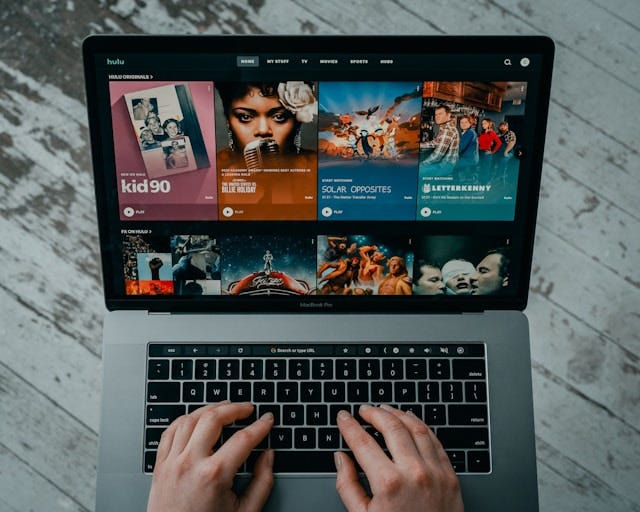
In the digital era, the way we consume entertainment has undergone a seismic shift, largely propelled by the rise of streaming platforms. From movies to TV shows, music, and live events, streaming entertainment has transformed the landscape of media consumption, reshaping our habits and preferences. This comprehensive article explores the multifaceted impact of streaming on content creation, distribution, and audience engagement, delving deep into the myriad ways in which it has revolutionized the entertainment industry.
The Evolution of Streaming Platforms
Streaming platforms have come a long way since their inception, evolving from rudimentary video-on-demand services to sophisticated content hubs with vast libraries and advanced recommendation algorithms. The early 2000s saw the emergence of pioneers like Netflix and Streaming Mentors, which offered a selection of movies and TV shows for rental or purchase. However, it wasn’t until the mid-2000s that the subscription-based model gained traction, with Netflix leading the charge by offering unlimited access to its content for a monthly fee. Since then, the streaming landscape has exploded, with a plethora of platforms catering to diverse tastes and preferences.
Convenience and Accessibility
One of the primary drivers behind the popularity of streaming entertainment is its unparalleled convenience and accessibility. Unlike traditional media consumption methods, such as cable TV or physical media, streaming allows users to access content anytime, anywhere, and on any device with an internet connection. This flexibility has revolutionized the way we engage with media, empowering consumers to take control of their viewing experience and eliminating the need to adhere to rigid schedules or physical constraints. Moreover, the advent of mobile streaming apps has further enhanced accessibility, enabling users to enjoy their favorite content on the go.
The Demise of Traditional Media
The rise of streaming entertainment has had a profound impact on traditional media industries, particularly cable and broadcast television. As more viewers flock to streaming platforms, traditional TV networks have seen a decline in viewership and advertising revenue. This seismic shift has forced legacy media companies to adapt or risk becoming obsolete, leading to the emergence of their own streaming services and the reimagining of content distribution strategies. However, despite these efforts, many traditional media outlets continue to grapple with the challenge of retaining audiences in an increasingly fragmented and competitive landscape. Furthermore, the rise of cord-cutting—the act of cancelling traditional cable or satellite TV subscriptions in favor of streaming services—has further accelerated the decline of traditional media.
The Power of Original Content
Central to the success of streaming platforms is their investment in original content. In a bid to differentiate themselves and attract subscribers, platforms like Netflix, Amazon Prime Video, and Disney+ have poured billions of dollars into producing original movies and TV shows. This focus on original programming has not only elevated the quality of content available to viewers but has also created opportunities for diverse voices and narratives to be heard. From groundbreaking series like “Stranger Things” to critically acclaimed films like “Roma,” streaming platforms have proven to be fertile ground for innovation and creativity. Moreover, the direct-to-streaming model has enabled filmmakers and content creators to bypass traditional gatekeepers and bring their vision to audiences worldwide.
Global Reach and Cultural Exchange
Streaming entertainment has transcended geographical boundaries, allowing content to reach audiences around the world. This global reach has facilitated cultural exchange and sparked conversations about identity, representation, and diversity. By offering a platform for international content creators to showcase their work, streaming platforms have helped bridge the gap between cultures and foster a greater understanding of the human experience. Moreover, the availability of subtitles and dubbing options has further facilitated the accessibility of foreign-language content, enabling viewers to explore a rich tapestry of global cinema and television. Additionally, streaming platforms have become valuable tools for language learning, as users can immerse themselves in foreign-language content with ease.
The Future of Streaming Entertainment
Looking ahead, the future of streaming entertainment appears both promising and uncertain. With the continued proliferation of streaming platforms and the ongoing evolution of technology, the industry is poised for further growth and innovation. However, challenges such as content oversaturation, subscription fatigue, and piracy loom large on the horizon. As competition intensifies and consumer preferences evolve, streaming platforms will need to continually adapt and innovate in order to stay ahead of the curve. Nevertheless, one thing remains clear: streaming entertainment has firmly established itself as the dominant force in the world of media, forever changing the way we consume and interact with content.
Summary
Streaming entertainment has revolutionized the way we consume media, offering unparalleled convenience, accessibility, and choice. From its humble beginnings as a niche market to its current status as a global phenomenon, streaming has reshaped the entertainment landscape in profound ways. As we continue to embrace the digital age, streaming platforms will undoubtedly play an increasingly important role in shaping the future of entertainment. By fostering creativity, diversity, and cultural exchange, streaming has not only democratized access to content but has also enriched our collective cultural experience. As we navigate the ever-changing landscape of media consumption, one thing is certain: the era of streaming entertainment is here to stay.






